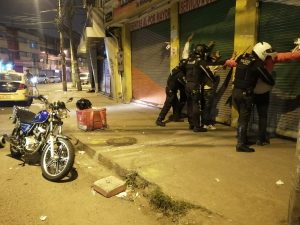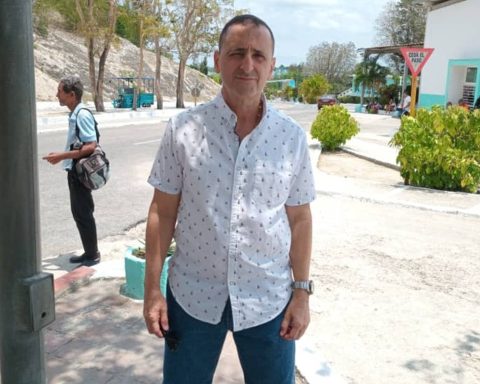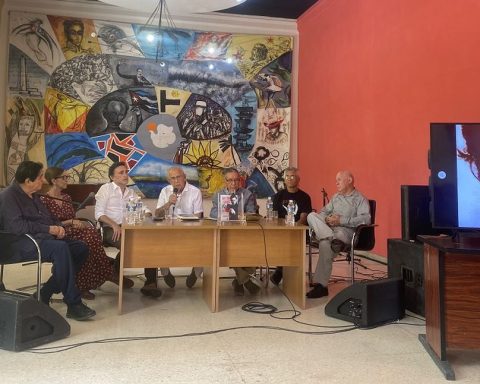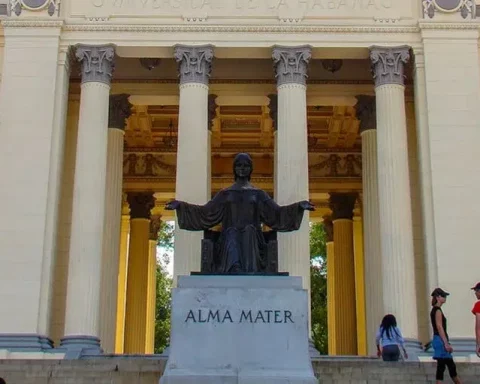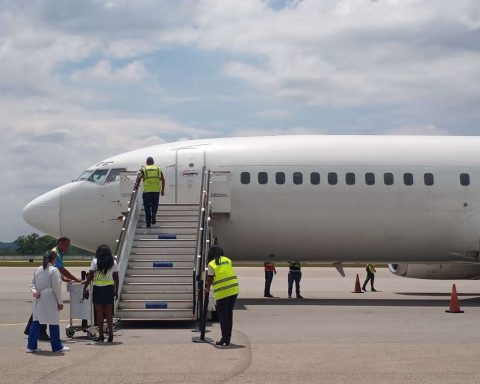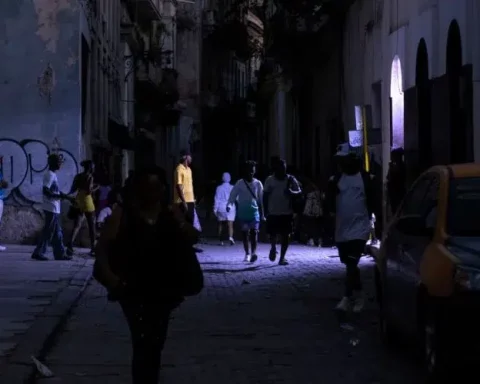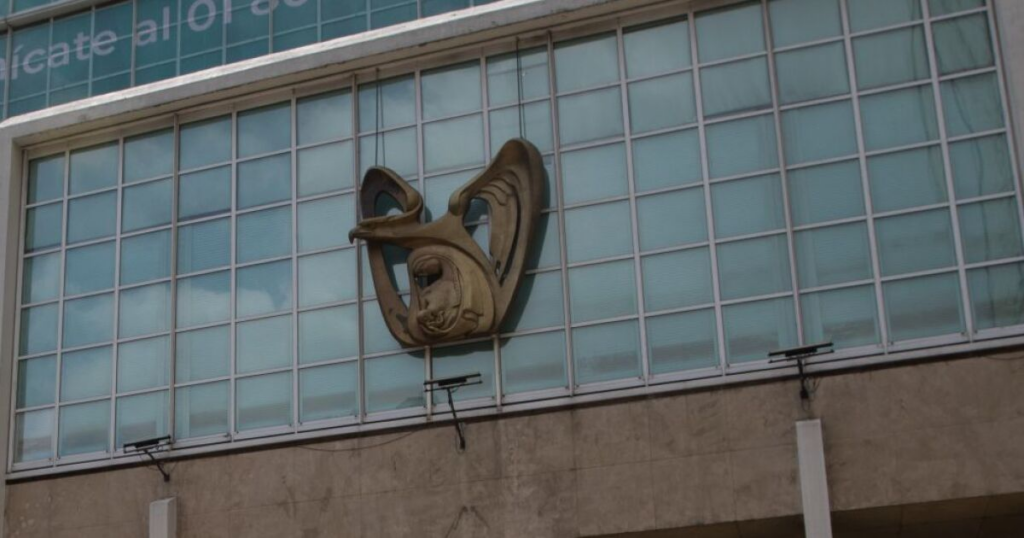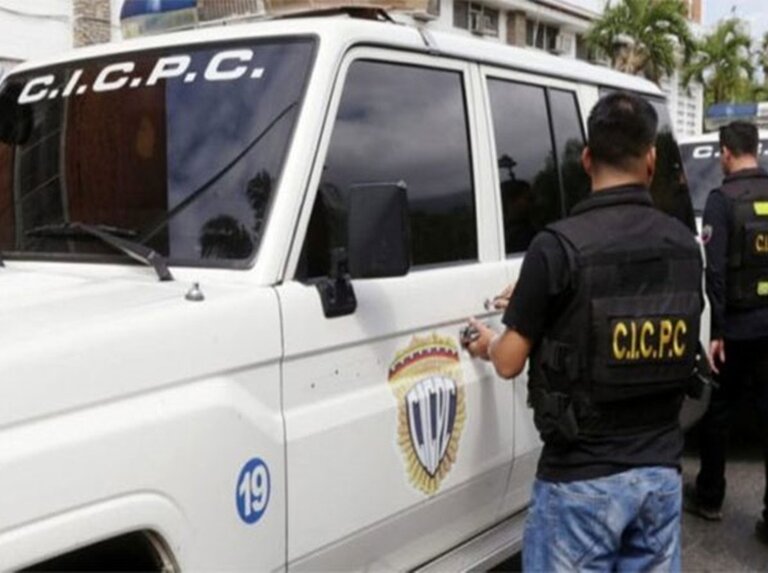Between January and March 2022, crimes in the capital have an increase of 9%. Know the most conflictive sectors and the most dangerous times.
A man ask for help While struggle with a antisocial who with one hand holds a gun and with the other he tries to take a bag from her.
In the video, which went viral on social networks, not only the victim’s screams are heard but also a shot that, luckily, did not hurt anyone. The scene ends with the criminal fleeing with his accomplice on a motorcycle, without achieving the robbery.
Everything went full day lightin the Avenue Republic of El Salvadorin the north of Quito.
The scene is no longer new. Surveillance cameras have captured similar robberies in other sectors of the capital where insecurity is not only a prospect, but, according to figures from the National Police, it is on the rise.
Everything is reactivated, even crime
José Luis García, head of operational management of the National Police, mentions that in Quito, between January 1 and March 4, 2022, a 9% increase on Criminal activitiescompared to the same period in 2021.
The uniformed officer details that since 2020, due to the confinement caused by COVID-19, the robbery rates were reduced, however, in 2022, by maintaining more relaxed measures with more open institutions, extended hours and capacity have meant that “not only commercial activity is reactivated, but criminal activity.”
One of the strategies of the Police of the Metropolitan District of Quito has been to segment the spaces where more crime occurs.
The data collected by the Police information analysis department show that the 82% of crime is specified in four zones from the capital: Eugenio Espejo, Quitumbe, Eloy Alfaro and La Delicia (see box).
The Iñaquito sector is the most dangerous
García points out that with the information they have been able to determine 34 chronic crime areas and 16 concentration of violencewhere prevention operations, greater patrolling, socialization with the community and other actions are carried out, for which he says “it would not be logical to reveal which sectors we are talking about, when that is where we are working.”
However, when asked which would be the place with the highest incidence of crime today, García mentions the Iñaquito sector. “Because it is a commercial, financial corridor of the capital and it is where the largest number of banking institutions are located, their headquarters, there are also commercial premises in a high number and it is one of the places where crime is normally present because it knows that it can get what you search”.
Between 2021 and 2022, in this sector a dead man in the lagoon from the park the Caroline, was a shootout with contracted modalitythe journalist Juan Carlos Aizpurúa was assaulted and wounded and the video of the man struggling is also from the sector.
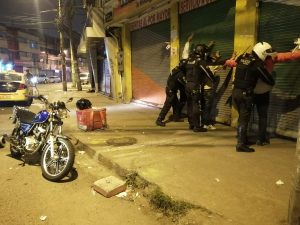
Peak crime hours
Although a citizen can be a victim of crime at any time, the National Police has determined that there are two times when these acts are carried out the most.
The first is from 05:30 to 08:30 when people go to work and usually occurs in alleys or bus stops.
While from 4:30 p.m. to 8:30 p.m. it also becomes a time with the highest crime rate. (AVV)
Quito Areas
With 82% concentration of crimes
- Eugene Mirror: Nayón, Zámbiza, Puéllaro, Chavezpamba, Atahualpa, San José de Minas, Perucho and Guayllabamba, La Concepción, Mariscal Sucre, Belisario Quevedo, San Isidro del Inca, Rumipamba, Kennedy, Iñaquito, the People’s Committee, Cochapamba and Jipijapa.
- Quitumbe: Chillogallo, Guamaní, Quitumbe, Turubamba and La Ecuatoriana
- Eloy Alfaro: Chilibulo, San Bartolo, Chimbacalle, La Argelia, Solanda, Lloa, La Mena, La Magdalena, La Ferroviaria.
- The Delight: Nanegal, Pact, Gualea and Nanegalito, El Condado, Ponceano, San Antonio de Pichincha, Nono, Cotocollao, Pomasqui, Calacalí, the People’s Committee and Carcelén.
“Crime moves. When there is control in a certain sector, it is not that the crime ends, but that it moves to other places”, José Luis García, head of operational management of the National Police
“Iñaquito (north of Quito) is one of the places where crime is normally present because it is a commercial, financial corridor of the capital where there are the largest number of banking institutions, commercial premises in a high number, because it knows that it can get what it wants. what are you looking for”, José Luis García, head of operational management of the National Police.
Quito registra 24 muertes violentas en 2022.
El sector de Nanegal es en el que menos delitos y muertes violentas se cometen.
